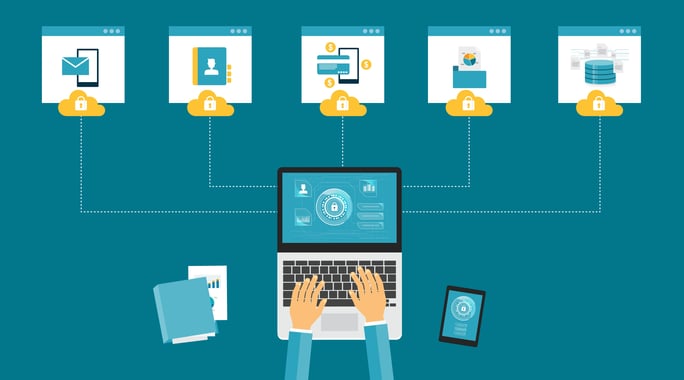
In the last year, news about online security, cyber attacks, ransomware, data loss, hacking and threats you didn't know existed have most likely bombarded your news stream. While you may not be directly responsible for system security you should still be aware of the threats that exist. As organizations embrace the latest IT technology such as mobility and cloud the traditional network boundaries are becoming increasingly complex to control and secure.
For example, consider the recent Petya and WannaCry ransomware attack. Cyber criminals are combining exploits and attacks in creative ways that are not new but can be tweaked and combined in new ways to create effective attacks. Hackers look for any security loophole they can find to get into your network and steal your data. They can get a high price for this on the black market, and cybercrime continues to rise. Even if they aren't after your data, a cyber criminal can bring down your systems, costing your business time and money.
Did you know? A typical ransomware attack can make its way into your systems from anywhere in the world, and results in 3 days of downtime, at a minimum.
Securing Your Business From Outside Threats: Technology Solutions
The most dangerous attacks come from skilled and sophisticated external hackers. These hackers look for network access vulnerabilities found in incomplete network defenses. Our security team's top 4 best practices to secure your business from outside threats and the technology solutions.
1. Firewall: A firewall serves as a baseline defense for your business's network. It's imperative that the firewall is the right type and kept up to date. Firewalls typically have a security subscription that needs to be maintained for security updates. Your IT Service Provider should provide you with a plan of security features.
2. Remote Access: Remote access makes doing business extremely convenient. However, insecure remote access gives hackers a pathway to compromise organization networks and gain access to records. By encrypting data as it's vulnerable when it makes a move from your secured internal network to an external endpoint you can reduce risk.
Remember Target's massive data compromise in 2013? It's believed the incident began when a hacker gained access to one of Target's vendor's systems. The vendor had remote access to Target's network allowing the hackers to get in through a "secure" connection to enter Target's network.
Administrators need to know and limit who has access from the outside,
which internal systems they have access to enter, and "how" they access.
3. Cloud Security: Cloud-based solutions are the computing equivalent of using a utility company with multiple users sharing and accessing the the same resource. A few major vulnerabilities to be dealt with include:
- Protecting the data moving back and forth between the "cloud" and your local network by making sure it is encrypted.
- Granting "least privilege" access to your employees and vendors to your cloud.
- Expanding long-standing on-premise security measures to manage newly shared resources.
Communicate with your cloud vendors on security measures to let them know what security and compliance requirements are needed, as well as what is already in place.
4. Testing: Find out whether your systems can stand up to an attack through penetration, vulnerability and bait testing. A vulnerability scan looks for known vulnerabilities in your systems and reports potential exposures. A penetration test is designed to actually exploit weaknesses in the architecture of your systems. Vulnerability scans should run continuously, especially after new equipment is loaded and is comprehensive while a penetration test can be run once a year and is short and to the point.
It's essential to identify where your vulnerabilities are and then implement best practices to secure your business from outside threats. Find the weaknesses in your data security before the cyber criminals do. Don't leave your network security up to chance.

